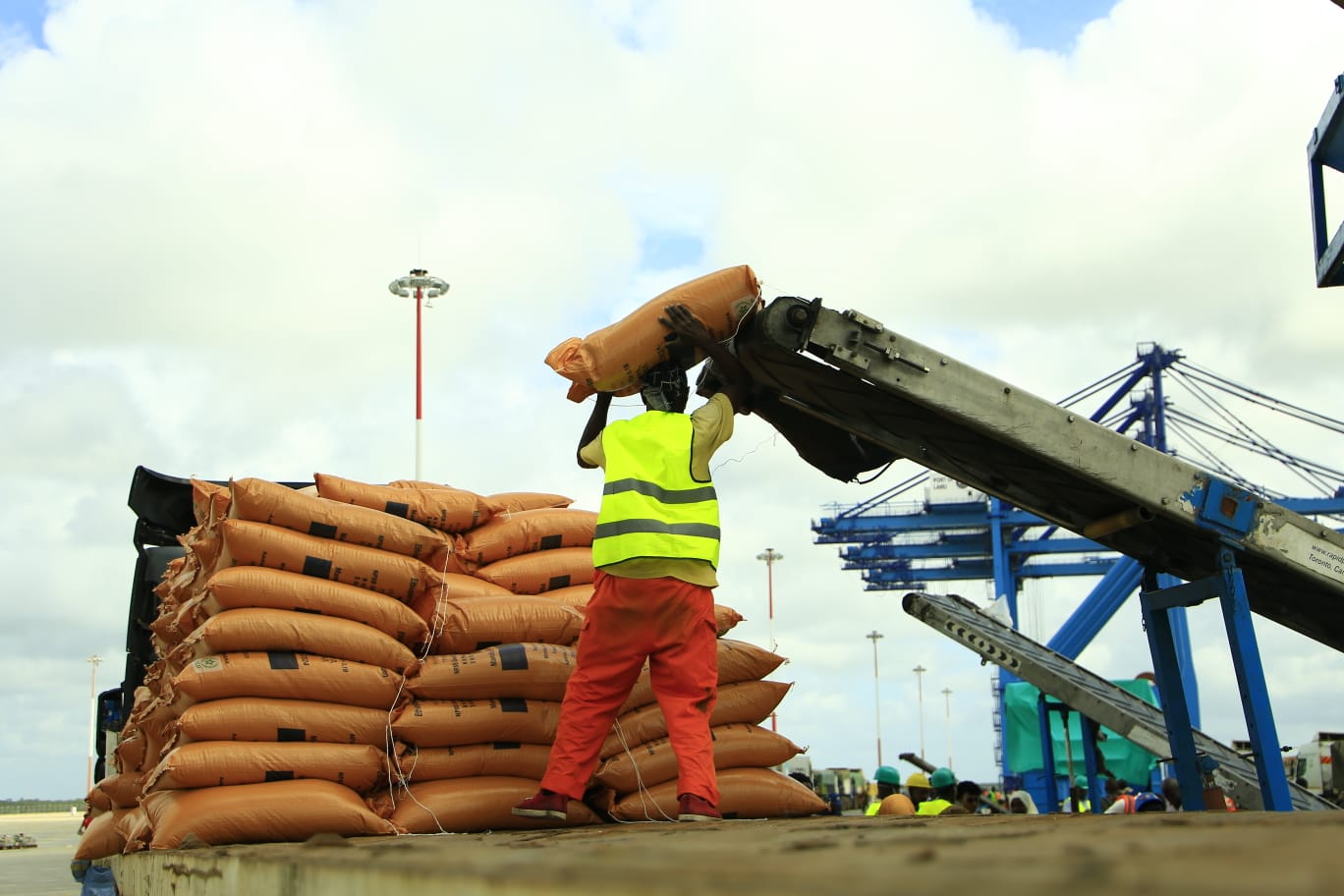Mombasa,
Tuesday, May 14, 2024
KNA by Sadik Hassan
The arrival of the first 60,000 tons of Ethiopia-bound fertilizer has bolstered the performance of the Sh75 billion Lamu Port, a key component of the Lamu Port South Sudan Ethiopia Transport (LAPPSET) project.
The Chairman of LAPSSET Corridor Development Authority (LCDA) Ali Mbogo termed the project a beacon of economic renaissance for Kenya and the entire Eastern Africa region.
He said the project, owned by three states would catapult the once sleepy Lamu archipelago to be the country’s and region’s next economic frontier.
The LAPPSET Corridor aims to enhance connectivity, foster economic integration, and stimulate socio-economic development across Ethiopia, Kenya, and South Sudan.
The project includes the Port of Lamu, a Standard Gauge Railway, highways, two oil pipelines, three international airports and three resort cities.
The completion of the first three berths equipped with three modern Ship-to-Shore gantry cranes by the Kenya Ports Authority (KPA) is poised to increase the efficiency of the Port of Lamu.
“This comprehensive development will catalyze a cascade of economic activities, making Kenya a nexus of international trade and logistics, particularly important for fostering trade relations with Asian markets,” said Mbogo during the annual meeting of the Economists Society of Kenya in Mombasa.
He noted that Africa is the least integrated continent in the world and the intra-imports between African countries amount to about 17 per cent.
The Lamu Port, Mbogo added, has given Kenya an alternative route of commerce as the country was depending entirely on the Port of Mombasa which has a narrow channel.
“If you go to Mama Ngina Water Front, you’ll see that channel. We have a very narrow channel.
If anything were to happen to that channel, then we will bring the economies not only of this country but the entire East Africa to its knees,” he said.
The Port of Lamu is a natural port with a draft of 18 meters and 21 meters during low tide and high tide respectively.
“We have constructed the port in such a way that the three berths have a quay of 1200 meters which can allow post-panamax vessels to berth at that port without any challenges.
Those vessels cannot berth in the Port of Mombasa,” said Mbogo.
Since the completion of the first berth in 2019, Lamu Port has been underutilized but the LCDA board successfully wooed Ethiopians to use the Port which is shorter compared to the ports of Djibouti and Tadjourah both in Djibouti.
“The route from Lamu to Moyale is slightly longer it is 1300 kilometres (km) but still it is shorter by 300km compared to the current route that Ethiopians are using to import their goods from Djibouti which is 1600 km,” said Mbogo.
“The Ethiopians have told us very clearly if this first consignment goes well then more than nine vessels will call on the Port of Lamu,” he added.
The fertilizer shipment will be transported to Ethiopia through the old existing routes as LCDA rushes against time to construct bypasses that will reduce the distance between Lamu and Moyale.
“We are reducing the distance for the Ethiopians from 1600 to 1000 KM once the bypasses are completed,” stated Mbogo, revealing that high-level meetings were ongoing to bring South Sudan onboard to start using Port of Lamu.
During the receipt of the bulk carrier vessel with fertilizer-MV Abbey II, KPA Managing Director (MD) Capt. William Ruto thanked the government of Ethiopia government for using the Port of Lamu.
“We are thankful for this call to the Port of Lamu and believe this is the first of many vessels carrying Ethiopia-bound cargo which we shall handle,” said Capt. Ruto.
The LAPSSET corridor project, he noted, was mooted 54 years ago to bolster regional integration and to tap on the enormous economic potential of Northern Kenya.
Courtesy of KNA
.


